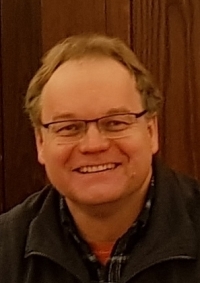Introduction to Crystal Physics
Lecturers: Johannes Birkenstock
Crystals have to be understood as anisotropic solids. In the first part the most important tool is introduced to describe and quantify reversible physical behavior of crystals in equilibrium: tensor calculus as a tool to describe anisotropic properties quantitatively and to calculate the behavior of crystals on transformations. Symmetry is of similar importance as it determines whether a crystal may exhibit specific properties, such as piezoelectricity, or not. Accordingly, the impact of symmetry on tensor description (usually leading to some ease in the calculus) is explained in detail.
In the second part, special chapters are dedicated to macroscopic physical properties and some details on their determination. Main chapters here are elastic, magnetic and electric properties.
The students will understand the scientific description of reversible physical behavior of crystals in terms of tensor calculus. They will be able to perform the determination of selected properties such as piezoelectricity and to predict if they may be expected for a given symmetry.
written module exam together with crystals optics
Klausur
Very close to the lecture in crystal physics:
J.F. Nye (1957): Physical properties of crystals, Oxford
More crystal physics text books:
W. Kleber, K. Meyer, W. Schoenborn (1968): Einführung in die Kristallphysik, Berlin
S. Haussühl (2007): Physical Properties of Crystals: An Introduction
P. Paufler (1987): Physikalische Kristallographie, Verlag Chemie
W.A. Wooster, A. Breton,… (1970): Experimental crystal physics, Oxford
Ch. Kittel (1971): Introduction to solid state physics, N.Y.
W. Voigt (1966, Nachdruck von 1910): Lehrbuch der Kristallphysik, Stuttgart
1st SWS:
2nd SWS:
3rd SWS:
4th SWS:
5th SWS:
6th SWS:
7th SWS:
8th SWS:
9th SWS:
10th SWS:
11th SWS:
12th SWS:
13th SWS:
14th SWS:
Basic Data
05-MCM-PP-1
Study Program
Master Materials Chemistry and Mineralogy
Module Name
Physical Properties of Crystals
Course Type
Lecture, Exercise (L+E)
First Year of Study
3 CP
2 SWS
Summer Term
Course Language
German and English
Contact Person

Kristallographie und Geomaterialforschung
Dr. Johannes Birkenstock
GEO 2300R
Phone: +49 421 218 - 65165
jbirken uni-bremen.de
uni-bremen.de
Kristallographie und Geomaterialforschung
Dr. Johannes Birkenstock
GEO 2300R
Phone: +49 421 218 - 65165
jbirken uni-bremen.de
uni-bremen.deLecturer

Kristallographie und Geomaterialforschung
Dr. Johannes Birkenstock
GEO 2300R
Phone: +49 421 218 - 65165
jbirken uni-bremen.de
uni-bremen.de
Kristallographie und Geomaterialforschung
Dr. Johannes Birkenstock
GEO 2300R
Phone: +49 421 218 - 65165
jbirken uni-bremen.de
uni-bremen.de
